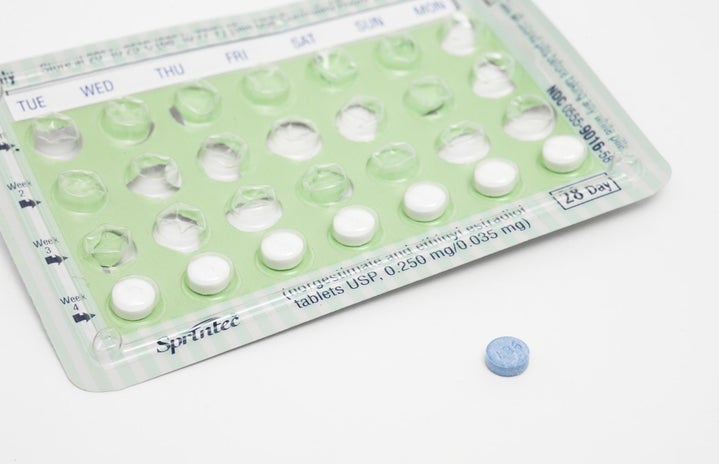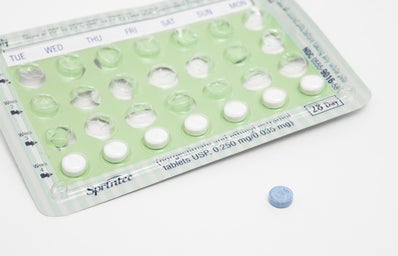Abdominal pain. Cramping. General discomfort… down there. Sound familiar? These symptoms are all commonly associated with the dreaded onset of your period. But what if there’s something else going on? For some collegiettes, a bad case of the cramps may signify something more serious – endometriosis, a frequently overlooked medical condition that affects millions of young women across the country. Her Campus breaks down the ins and outs of endometriosis. Read on to find out what it is, who it targets, and what you can do to protect yourself.
What Is Endometriosis?
Endometriosis occurs when tissue from the inside lining of the uterus grows in other areas of the body. The most common locations of endometrial implants in young women are behind the uterus and near the bladder. It’s important to note that endometriosis is not a sexually transmitted disease.
According to eMedicineHealth, over 5.5 million American women will experience problems with endometriosis during their lifetime. Although women of all ages can be affected, it’s most common in women between the ages of 25 and 40. Calculating an exact number is difficult, since many women have the condition and do not have symptoms. Women may also have symptoms that could result from endometriosis, but never get officially tested to confirm a diagnosis.
The new Boston Center for Endometriosis is the first center in the world to provide endometriosis diagnosis, treatment, education, and research across the lifespan, from adolescence to adulthood.
“People do not know that endometriosis can affect young women and girls,” said Dr. Marc R. Laufer, MD, Chief of Gynecology at Boston Children’s Hospital and gynecologic surgeon at the Center for Infertility and Reproductive Surgery at Brigham and Women’s Hospital. “Between teens remaining silent about their pain and gynecologists trying to avoid laparoscopic surgery required to detect endometriosis, it takes an average of 9 years for most women who have the disease to get an accurate diagnosis.”
University of Washington student Lucy* was diagnosed with endometriosis during her junior year of high school. “It was honestly one of the scariest things I’ve ever been through. I knew nothing about endometriosis and it sounded so complex.” But Lucy read up on the condition and became more familiar with treatment options.
What Causes It?
Unfortunately, we still know very little about endometriosis. Researchers and doctors have been unable to identify exactly what causes the condition. However, there’s some evidence that a genetic component is involved. According to the Center for Young Women’s Health, women may be more likely to develop endometriosis if female relatives have the condition.
What Are The Signs?
Young women can experience drastically different symptoms depending on the degree of the condition. The location of the endometrial implants can also contribute to symptoms. The most common ones include pelvic pain and severe period cramps. But symptoms don’t only show up during your time of the month. Some people also have pain while working out or during sex. “The tissue becomes scarred and adheres to other nearby tissue causing severe pain, especially during periods and intercourse,” says Carolyn Mueller, a women’s health specialist at Kaiser Permanente Hospital. Less popular symptoms include painful or frequent urination, diarrhea, or constipation. If endometriosis goes untreated, it can cause long-term problems like infertility.
Endometriosis can be tricky to diagnose. The only way to be completely sure is to have a laparoscopy. This surgical procedure allows your doctor to look inside at your pelvic organs with a special lens to identify any endometriosis implants. Before a laparoscopy, your doctor might order blood tests, vaginal cultures to check for infection, an ultrasound, or an MRI.
What Helps Relieve Symptoms?
Unfortunately, there is no cure for endometriosis. But there are several methods used to combat symptoms. Options include surgery, hormonal treatment, lifestyle modification (think relaxation exercises and yoga), and alternative practices like acupuncture and herbal remedies. Since there is no treatment that works for everyone, many patients try multiple methods before settling on a particular one.
“At first, I was really hesitant to do anything invasive,” says Lucy. “I tried herbs and meditation, but neither one seemed to work. So I opted to get surgery in hopes that it would drastically improve my symptoms. Looking back, I’m so glad that I made that choice. It really changed everything for the better.” Now a freshman in college, Lucy is maintaining an active lifestyle with minimal pain. “I’m consider myself lucky. It could be a lot worse, but I’m managing to do the things I love while still monitoring my symptoms on a regular basis.”
Patients like Lucy are proof that a positive diagnosis isn’t necessarily the end of the world. Recent medical advancements give hope to those suffering from endometriosis. The important thing is to keep an open mind and focus on finding the best treatment method to control your symptoms. Although no one has found a cure for endometriosis, Mueller is hopeful that things will change. “We may not know why it occurs. But of course, we always hope for a cure.”
[pagebreak]
What’s A Collegiette To Do?
If you think you might have endometriosis, make an appointment with a gynecologist to get a professional opinion.
Before going in, it’s helpful to keep track of your symptoms for a few weeks. Try filling out this pain tracker so you have something to show your doctor.
A Word of Caution…
Keep in mind that having symptoms doesn’t guarantee that you have endometriosis. George Mason University student Erin experienced this a few years back. “I have always had heavy periods and severe cramps during my menstrual cycle. I mentioned this to my doctor and she thought I might have endometriosis. She suggested I get an ultrasound of my abdomen and uterus to see if she could diagnose me.” After undergoing tests, Erin found out that she did not in fact have endometriosis.
Mueller has seen many cases of patients being misdiagnosed with endometriosis. “It’s difficult to diagnose since many things can cause pelvic pain. Vaginal infections, cystitis, kidney stones, appendicitis, muscle spasms, irritable bowel, ovarian cysts, uterine growths called fibroids, constipation, and diverticulitis… to mention only a few.” Most pros recommend getting checked out even though it might not result in having the condition.
Want to learn more about the endometriosis? The Center for Young Women’s Health is hosting a conference in April at the Children’s Hospital in Boston. Check out this site for more information.
* = Name has been changed
Photo Sources:
http://blog.amsvans.com/7649-practicing-meditation-for-pain-management/
http://health-advantage.blogspot.com/2011/11/ways-to-diagnosis-of-mesoth…
http://www.womensheart.org/content/HeartWellness/improve_doctor_patient_communication.asp
http://www.womenhealthzone.com/wp-content/uploads/2011/03/pain-with-endometriosis.jpg
http://www.ladycarehealth.com/wp-content/uploads/2011/11/Get-Pregnant-With-Endometriosis.jpg
http://s1.madeformums.com/uploads/images/large/6484.jpg

